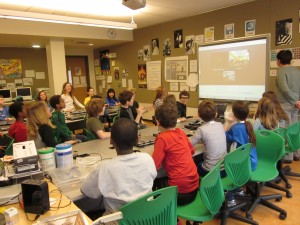S2S Partnerships
MCI strived to help the Millennium Cities further their progress toward the attainment of Millennium Development Goal (MDG) 2, universal primary education, and the Cities’ and national-level accomplishments were extraordinary. Yet universal primary education is not enough. Secondary and tertiary education are essential to providing youth – including those in the Millennium Cities – the skills and expertise they will need to obtain good jobs and create a better future for themselves, their families and communities.
 MCI’s School2School (S2S) Partnership Program provided an opportunity for students in the Millennium City public schools – primarily under-resourced facilities in low-income neighborhoods – to benefit from a unique learning opportunity intended to help students overcome some of the obstacles they face on a daily basis.
MCI’s School2School (S2S) Partnership Program provided an opportunity for students in the Millennium City public schools – primarily under-resourced facilities in low-income neighborhoods – to benefit from a unique learning opportunity intended to help students overcome some of the obstacles they face on a daily basis.
MCI facilitated S2S connections between schools in the Millennium Cities of Accra and Kumasi, Ghana; Kisumu, Kenya; Bamako, Mali; and Louga, Senegal, with schools in California, Connecticut, Delaware, Maryland, Massachusetts, New York and Washington, D.C. Many of these partnerships were strengthened through the schools’ participation in several “World Read Aloud Day” and “International Day of the Girl” celebrations organized by our partner LitWorld, the NY-based non-profit dedicated to improving literacy worldwide.
Thanks to the new technologies, particularly vibrant S2S connections were built between Kisumu Day School, a boys’ high school in Kisumu, Kenya, and Los Gatos High School, a co-ed high school in Silicon Valley, where several years of personal and literary exchanges transformed students’ preconceptions of each others’ worlds. A renewed S2S partnership, between Sidwell Friends School in Washington, DC, St. Louis Senior High School for Girls and Opoku Ware Senior High School for Boys, took off in 2014, with online exchanges on current issues of common interest.
It is our hope that these S2S connections will not only inspire teachers and students in the Millennium Cities and the U.S. to create unique and stimulating learning experiences centered around the MDGs, but that these linkages can also help bridge the gap between educational opportunities available to both students and teachers in the developed and developing worlds.



